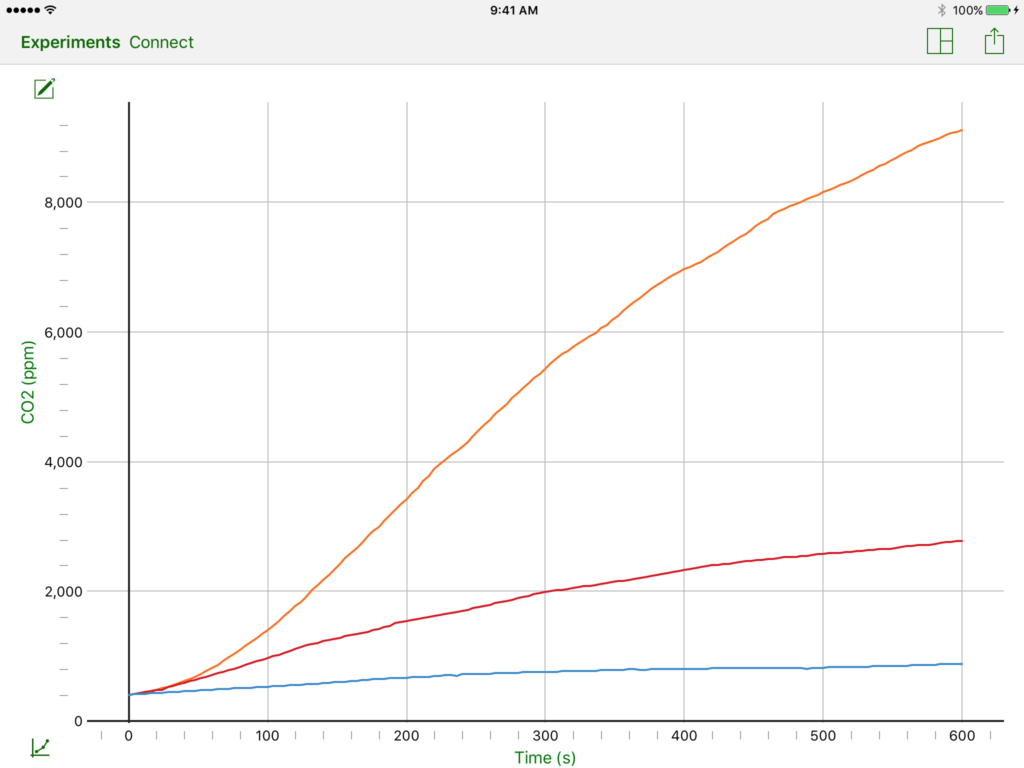Studying soil is an easy, yet often overlooked, way to introduce students to the role of cellular respiration in the carbon cycle. The Great Lakes Bioenergy Research Center (GLBRC) has developed a set of free classroom materials to guide educators through this activity using different methods that measure cellular respiration from soil microbes, often referred to as soil respiration. These materials are aligned to the Next Generation Science Standards and have different methods available for field or classroom use. Download the classroom materials for this activity from the GLBRC website.
Vernier biologists tested the field method and found that it provides great results. We used our CO2 Gas Sensor to compare soil respiration at three locations around the Vernier office. The chamber used for this experiment was simply a Nalgene® bottle with the base cut off, which allowed it to be placed directly onto the soil. The orange trace on the graph shows that the soil respiration rate was highest in planter boxes that had recently been placed on our roof. Adding organic compost and vermicompost to the soil in these boxes was likely responsible for the high rates of respiration observed. The red trace on the graph shows the respiration rate of our bioswale. Since this is a well-established landscape, respiration rates are good but are not going to be as high as the newly established planter boxes. The lowest rate, the blue trace, was measured in soil that had been heavily compacted around a large tree. Soil compaction reduces the amount of available oxygen and water in the soil, which is reflected in the data recorded at this location.

If you are not able to do this activity in the field, you can easily repeat this experiment in your classroom using the CO2 Gas Sensor and a few soil samples. Just place soil samples of equal mass into the Nalgene bottle that comes with the CO2 Gas Sensor and start collecting data. You could also easily turn this activity into an inquiry experiment by having your students manipulate variables such as salinity, moisture, compost content, and soil type to see the effects these have on soil respiration.
If you have any questions about this activity, contact biology@vernier.com
